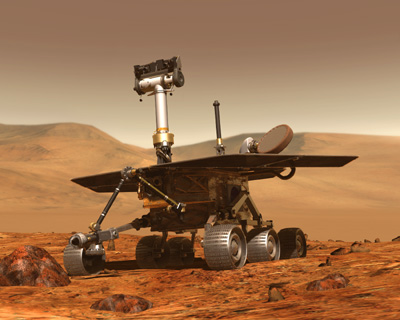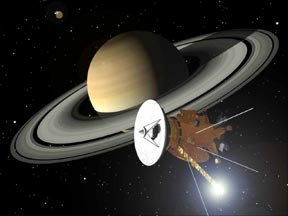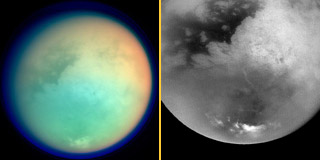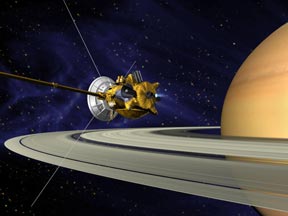A Rover on the Red Planet! Spirit Will Look at the Geology of Mars
News story originally written on January 14, 2004
NASA’s rover, named Spirit, has successfully landed and will soon be scouting the surface of Mars for interesting geology!
Scientists are interested to know whether the depression where Spirit landed was once a lake. Currently, there does not appear to be liquid water at the surface of Mars, but this may not have always been the case. It is possible that large amounts of liquid water were once at the surface. If water was available, living things may have been present as well.
Spirit is looking at the nearby sedimentary rocks for clues to understand what the environment was like in the past. These types of clues are not just important for understanding Mars. Information from sedimentary rocks is also used to understand what past environments were like on Earth.
Take a look at some sedimentary rocks and environments from Earth to understand what type of clues Spirit is looking for in the Martian rocks!
Last modified January 14, 2004 by Lisa Gardiner.
You might also be interested in:

NASA’s rover, named Spirit, has successfully landed and will soon be scouting the surface of Mars for interesting geology! Scientists are interested to know whether the depression where Spirit landed
...more
On January 16, 2004, NASA Administrator Sean O'Keefe announced the cancellation of the final scheduled servicing mission to the Hubble Space Telescope (HST). The review board studying the Shuttle Columbia
...more
The Cassini spacecraft, en route to Saturn, will zoom past Saturn's odd moon Phoebe on June 11, 2004. Cassini will pass within 2,000 km (1,243 miles) of the moon's surface and should send back images with
...more
NASA's Cassini spacecraft, which is in orbit around Saturn, released the Huygens probe and sent it on its way to Saturn's largest moon, Titan. The probe, pushed away from the Cassini "mothership"
...more
The robotic Cassini spacecraft flew by Saturn's moon Titan on October 26, 2004. Titan is Saturn's largest moon, and has the thickest atmosphere of any moon in our Solar System. Cassini captured what are
...more
The Cassini spacecraft will arrive at Saturn on June 30, 2004. Cassini's engine will make a critical 96-minute burn starting at 7:36 p.m. Pacific Time (10:36 p.m. EDT) on June 30. The burn will slow Cassini
...more
Scientists have recently discovered that thousands of Adelie Penguins thrive in patches of the chilly Southern Ocean near Antarctica's coastline. In these special areas of the ocean, called polynyas,
...more














